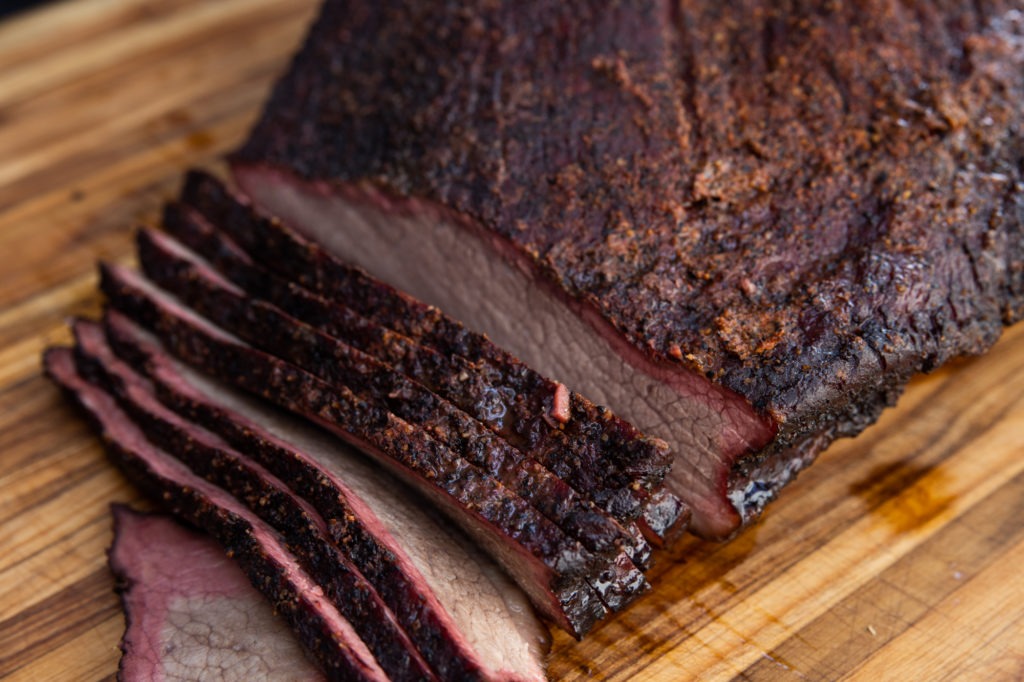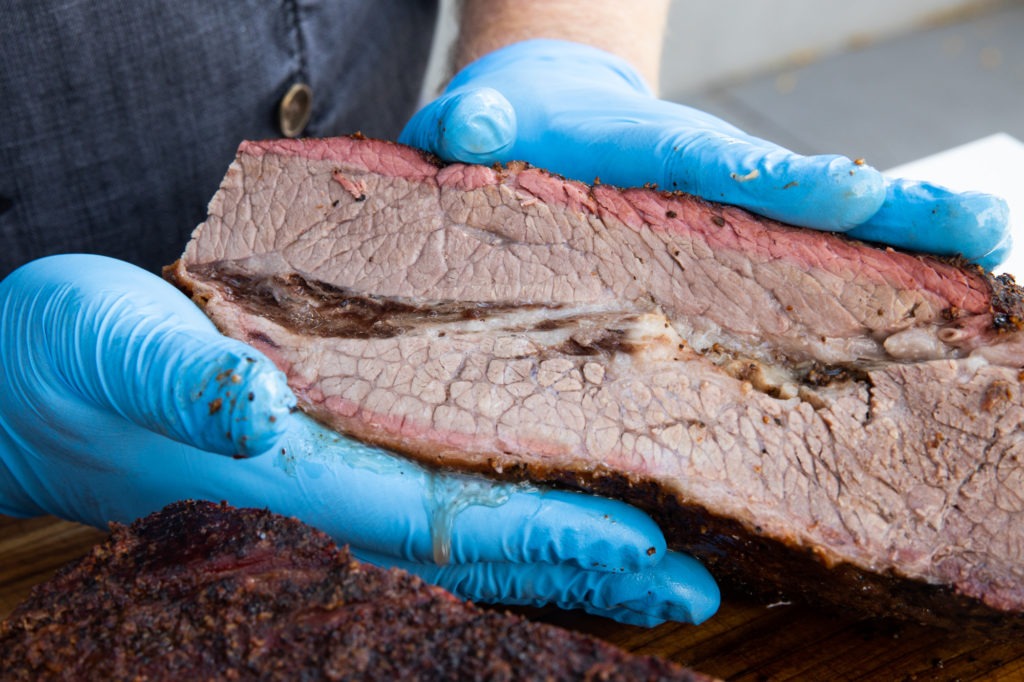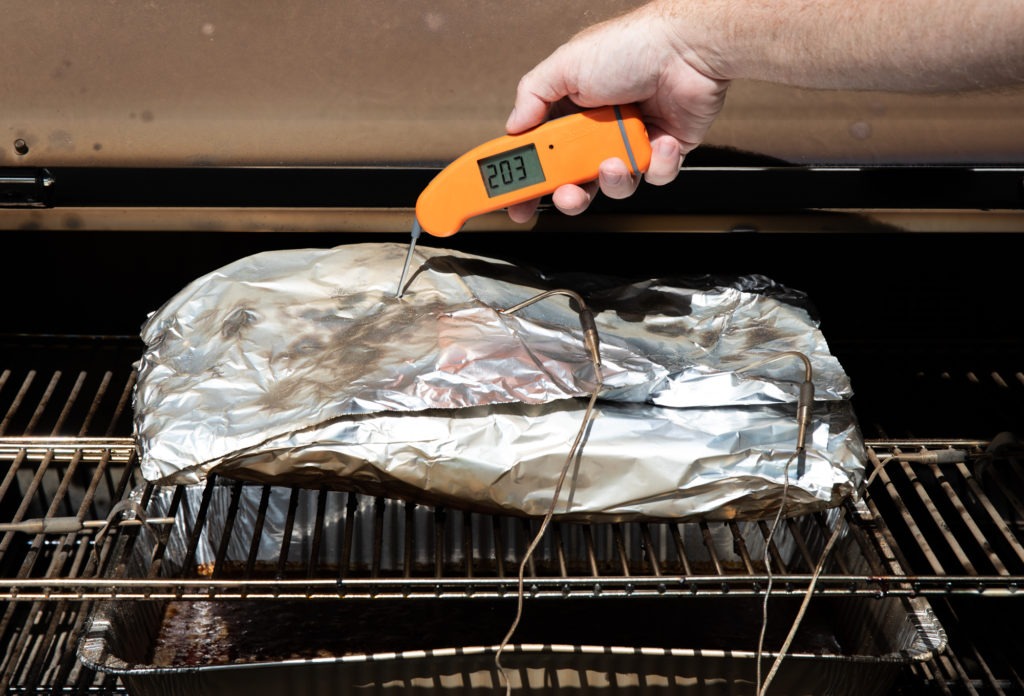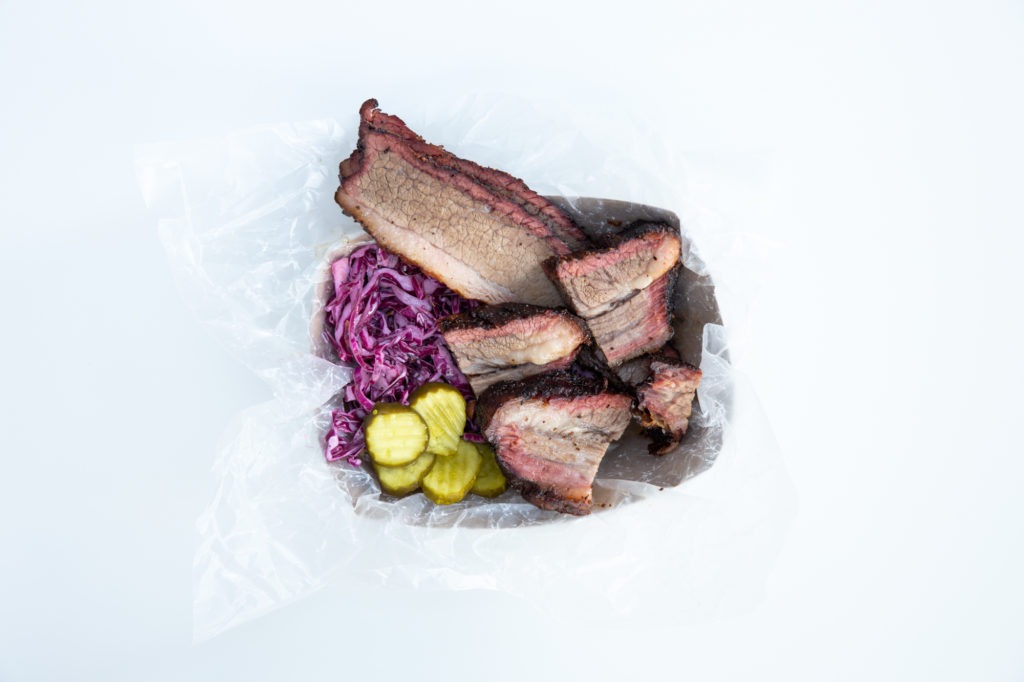What Temperature Is Beef Brisket Done So I Can Slice It Up
Brisket is meat alchemy. You take a tough, useless cut of meat full of iron-like connective tissue and turn it into smooth, soft, smoky, savory meat pudding! But, if there's anything to dislike about brisket, it has to be that it takes seemingly forever to cook. 12 hours? 18 hours?!? There's no way to cook a brisket on a whim and have it the same day. Or is there?
Though the low-and-slow method of brisket cookery is by far the most classic method, there are those who also swear by a hot and fast method. Here, we'll discuss the temps and tricks you need to cook your brisket in half the time. Buy it Saturday morning, have it ready for an early dinner! What a concept.
Faster brisket: what's happening?
The traditional method of smoking a brisket low-and-slow evolved to handle the high collagen content of brisket, though the pitmasters at the time didn't know that. Given the origins of BBQ in small pithouses and fields and the lack of aluminum foil during said evolution, it makes sense that the lower, slower method predominated. But there is another way.
You see, collagen breakdown is a function of both time and temperature. That means that it breaks down faster at higher temperatures. And that means that by increasing the temp of your BBQ cook, you can get your brisket done significantly faster.
Are there challenges to this method? Yes. You can't just chuck a full packer into a 325°F (163°C) smoker and come back in five hours to find melty, juicy perfection. There are some thermal considerations you have to take into account.
First, with a higher temperature, the bottom side of your brisket is more likely to get scorched, so it's important to cook it fat-side down. (Most pitmasters recommend this anyhow, but it's especially important with this method.)

Second, the high heat does not eliminate the stall. Your brisket's proteins are still going to squeeze water out, and that water will still cause evaporative cooling. A crutch is essential here, and it should be a full-on tinfoil crutch. Wrapping your brisket in foil after the bark has set (at about 160°F [71°C]) will create a high-humidity environment for it to cook in, preventing evaporation and the associated cooling. And because the brisket can't "sweat" itself cool, the higher temperature will be able to break down that collagen faster than a lower temp would.
You still need to cook your brisket to about 203°F (95°C), but there is a good chance it won't be completely tender by the time you get there. You still need to check the tenderness with a knife, a probe, or by jiggling the whole thing. We cooked one easily within a workday, clocking in at about 6.5 hours. But it was a 16 lb packer—a smaller piece would cook faster.

Though anathema to many, the higher-faster route to brisket is used by such BBQ gurus as Myron Mixon and Malcom Reed, who said of it:
[M]y hot and fast brisket turned out really good. I was more than pleased with it. Not sure I would go to bat with it in a contest, but I would definitely be confident to serve it if you came over for a Saturday BBQ."
–Malcom Reed, HowtoBBQright.com
Though people may disagree, I say that tradition is not the highest good in BBQ. And any way to get smoky, tender, juicy brisket to my plate faster is surely a welcome option!

High-heat Brisket Recipe
This method is adapted from Chris Allingham at The Virtual Weber Bullet
Ingredients
- 1 full packer brisket
- Rub of your choice
- Yellow mustard to act as a binder
Instructions
- Trim your brisket, but not as much as you normally might. Get the big fat seam from between the flat and point, but you don't need to trim the rest of it as deeply as for a low/slow cook.
- Rub the brisket with mustard and your favorite rub.
- Place the brisket fat-side down in a smoker preheated to 350°F (177°C). Using a Signals multi-channel thermometer, place one probe in the flat and one in the point. Set the high-temp alarms on each channel to 170°F (77°C).
- Use the third channel to monitor the air temp of your pit. Set the high alarm to 375°F (191°C) and the low-alarm to 325°F (163°C).
- Smoke the brisket until the internal temp reaches 170°F (77°C).
- Wrap the brisket in a double layer of aluminum foil.
- Place the brisket back in the smoker, fat-side up.
- Reinsert the probes into the point and flat, setting the high-temp alarms for 203°F (95°C).
- When the alarms sound, verify the temp with your Thermapen ® , and also verify that the probe of your Thermapen encounters little to no resistance going through the meat. Your brisket may need more time to finish breaking down the collagen.

- Once your brisket is properly tender, remove it from the smoker, let it rest for a half-hour, and slice it up.

With a little thermal knowledge, tools like the Signals™ 4-Channel Alarm and the Thermapen®, and a willingness to break outside the traditional BBQ box, you can have brisket in less than half the time of a low-and-slow cook. It's smoky, it's tender, it's juicy, and it's ready by dinner time. Give it a try!
To learn more about how to cook brisket right, take a look at our Brisket Primer.
Shop now for products used in this post:
Source: https://blog.thermoworks.com/beef/hot-and-fast-brisket-done-in-half-the-time/

0 Response to "What Temperature Is Beef Brisket Done So I Can Slice It Up"
Post a Comment